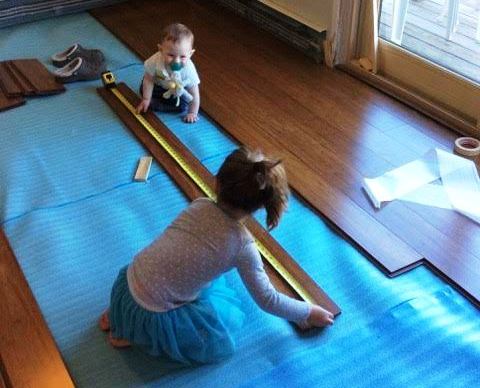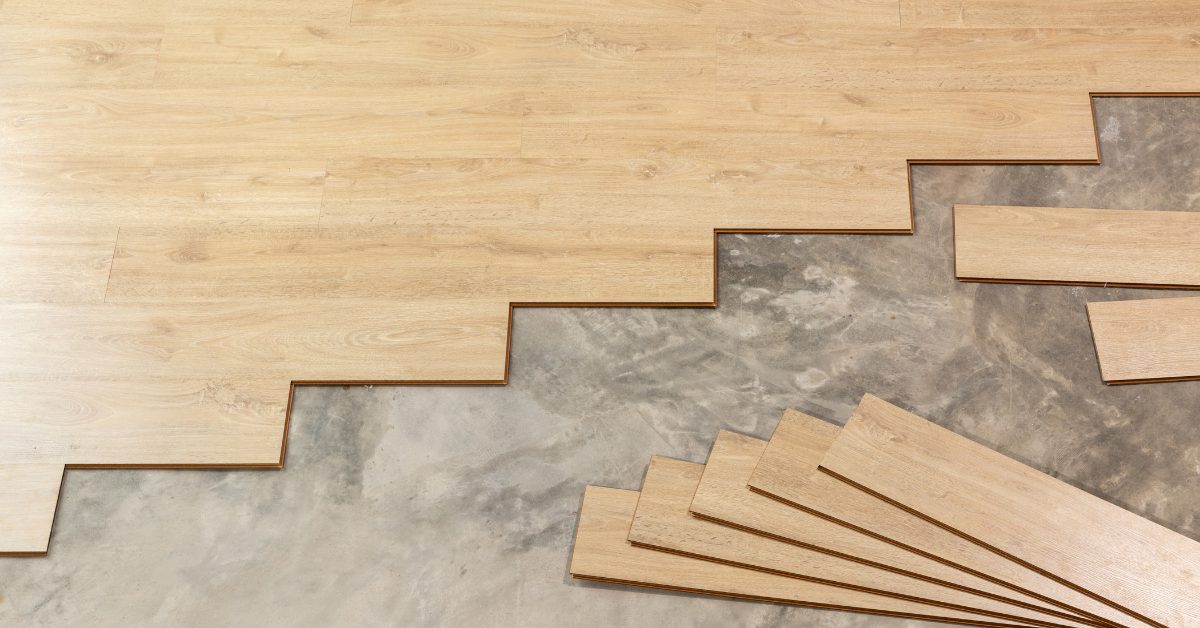Ever found yourself drawn to the warmth and natural elegance of bamboo flooring? If you’re like many homeowners, the idea of transforming your space with this beautiful material is exciting. But the thought of installing bamboo flooring yourself might seem daunting.
What if we told you, it’s not as difficult as it seems? With a little guidance and the right resources, you can absolutely achieve a stunning bamboo floor that you’ll be proud to show off.
Installing Bamboo Flooring: Not Just for the Pros
Installing your own bamboo floors is a rewarding experience. It’s also a fantastic opportunity to learn something new.
Many homeowners with varying skill levels have successfully installed bamboo flooring themselves. With a can-do attitude, a little bit of sweat equity, and the right information, you’ll be amazed at what you can accomplish.
Here’s how.
Step 1 – Do Your Homework
Start at The Bottom!
The type and condition of your subfloor can significantly impact the success of your installation. Make sure to research best practices for preparing your specific subfloor type, as well as any necessary materials or tools you might need.
Which Installation Method Is For You?
Bamboo flooring isn’t a one-size-fits-all kind of thing. There are different types to choose from, each with its own installation method:
Click-Lock: If you’re new to DIY projects or just want something that’s quick and easy, click-lock bamboo flooring is your friend. The planks simply click together, no glue or nails required. You can even unclick and uninstall them with ease if needed.
Tongue-and-Groove: This one’s a bit more hands-on. You’ll need to fit the planks together like puzzle pieces, and then secure them with glue or nails. This classic method creates a super strong, durable floor.
Nailing down bamboo flooring is the most secure option, but it can also be the most challenging for beginners.
Ensure You Get the Best
Not all bamboo flooring is created equal. Invest in high-quality products from reputable brands to ensure durability and longevity. Look for certifications like FloorScore, which indicates low VOC emissions and better indoor air quality.
Step 2 – Consult the Roadmap
All you need now, is a good installation guide. It should cover all aspects of the installation process to help you succeed with confidence.
When looking at an installation guide, make sure that it details:
- Essential Tools: A complete inventory of the tools you’ll need, so you can gather everything before you start. No last-minute runs to the hardware store!
- Step-by-Step Instructions: Easy-to-follow instructions that explain each step of the process, from prepping the subfloor to post-installation maintenance. . It is your personal roadmap to a beautiful bamboo floor.
- Visual Aids: Clear photos and diagrams to show each step will help you picture the process and make sure you’re doing it right.

By arming yourself with knowledge, and avoiding common mistakes, you’ll be well on your way to a successful installation.
Insider Tips for Flawless Bamboo Floor Installation
To help you achieve the best possible results with your bamboo flooring project, here are some tried-and-true tips from the pros:
- Acclimation is Key: Bamboo, like all wood products, is sensitive to changes in humidity and temperature. Allow your flooring to acclimate to your home’s environment for at least 48-72 hours before installation. This helps prevent warping or gapping later on.
- Subfloor Matters: Ensure your subfloor is clean, level, and dry before you begin. Any imperfections in the subfloor will show through your new bamboo floors. Use a leveling compound or plywood underlayment if necessary to create a smooth surface.
- Mind the Moisture: Consider using a moisture barrier underlayment, especially if you’re installing over concrete. This will protect your bamboo flooring from moisture damage.
- Cutting with Care: Use a sharp blade and a miter saw for precise cuts. Invest in a good quality pull bar to tighten joints and ensure a seamless look.
- Leave Room to Breathe: Bamboo flooring expands and contracts with changes in humidity. Leave a small gap (about ¼ inch) around the perimeter of the room to allow for this movement. This gap will be covered by baseboards or quarter round molding.
Knowing Your Limits: DIY vs. Professional Installation
We encourage DIY projects, but it’s crucial to assess the size of your project and your comfort level. The following situations may mean that hiring a professional installer is the best course of action.
- Complex Layouts: If your room has multiple angles, curves, or other unusual features, the installation process can become more challenging. Some modern flooring patterns may also seem daunting to achieve.
- Extremely Large Areas: Installing bamboo flooring in a large space can be physically demanding and time-consuming. Starting a project from a place of overwhelm is never a great idea.
- Time Constraints: If deadlines are tight, you may make mistakes that could have been otherwise avoided.
- Lack of Experience or Confidence: If you simply do not feel up to it, we get it! It’s perfectly okay to entrust the job to an expert if you’re unsure.
While there are certain situations where calling in a pro is the smart move, installing your own bamboo flooring is not a dream!
With the right knowledge and resources, you CAN transform your home and create a space you truly love. So why wait? It’s time to roll up your sleeves, grab your tools, and embark on your bamboo flooring adventure.

Marzanne is our eco-enthusiast with an unwavering love for all things green! 🌱 As a self-proclaimed “green queen” and a DIY aficionado, her zeal for eco-conscious living shines through in every aspect of her life. ♻️
Join Marzanne as she shares her quirky, eco-infused adventures, offering tips, tricks, and a sprinkle of good-natured humor on integrating sustainable products, green design, and eco-friendly living into your home. She’s the green-spirited friend you never knew you were missing! 🌿🏡😄

